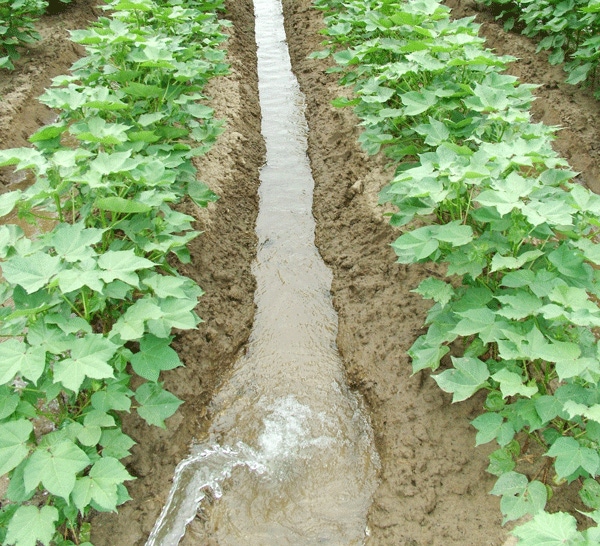
The amount of water available to a cotton plant during a growing season may be an important factor in final yield and quality, but when that moisture is available also makes a difference, said a USDA-ARS researcher during an irrigation workshop at the Beltwide Cotton Conferences in Orlando.
P.J. Bauer, who works out of the USDA-ARS station in Florence, S.C., discussed the most water-sensitive growth stages for cotton. He said cotton needs little moisture from emergence to first bloom. “Water deficit at this stage has little impact on yield or fiber properties,” Bauer said. “So, we see no reason to irrigate. In fact, a little stress at this time may be beneficial. It makes the plant less sensitive to subsequent water deficits.”
He said Diane Rowland, with the University of Florida, has suggested that “primed acclimation” may be good for cotton.
“Primed acclimation,” according to Rowland, is a “time of mild, controlled water deficits (that) acclimates plants to water scarce conditions; thereby beginning (or priming) a cascade of plant responses that increase water-use efficiency. Primed acclimation induces physiological changes in the plant that make it more drought-tolerant during mid-season, when detrimental effects of water stress are maximal.”
Bauer said water demand begins to pick up after first-square. From first-square to first-bloom the plant needs from 0.1 to 0.25 inch per day. “This is a critical period as the plant begins to grow rapidly,” he said. “Cell growth is critical and is the first area to show water deficit.”
He said roots are also important indicators of moisture stress. “Water stress limits the soil volume [roots can] explore for nutrients.
“Also, extreme water stress moves water from the leaves and causes wilting.”
He said studies in the Texas High Plains show a strong relationship to water supply and lint yield. “From planting to square, we see a negative correlation,” he said. “From square to first bloom, we see a highly significant correlation (water availability to lint yield).”
Demand from first bloom to peak bloom is from 0.25 to 0.40 inch per day. “Water stress at this point affects growth, especially early,” Bauer said. Boll retention is also affected as are fiber properties.
“Early flowering is an important growth stage for water. Cotton fiber length is largely determined the first two weeks after flowering,” he said.
“After peak bloom, water use declines and water stress becomes less critical.” He said moisture stress at this growth stage may affect shedding of young squares and bolls and some fiber qualities.
Varietal response
Chris Main, Extension cotton specialist with the University of Tennessee in Jackson, reported on a one-year study of variety responses to irrigation. Main cautioned the audience that the study was basically a one-year “fact-finding” exercise and that further research may show more differences.
“We want to find out if cotton varieties differ in response to irrigation,” Main said.
Weather was a factor. “Rainfall can be problematic with irrigation and variety response research,” he said. Rain may have accounted for some of the diverse results he found in the study.
He set up trials in Arkansas, Mississippi and Tennessee and planted 16 different varieties. Water application ranged from 21 inches to 29 inches for the season. He said heat units in Tennessee were about 300 less than average.
“We had a very positive impact on the crop in Arkansas,” he said. “We had a very negative impact on the cop in Mississippi. And we had little impact in Tennessee.”
Yield advantage in Arkansas, across all varieties, ranged from 32 percent to 110 percent. In Mississippi, yield was down by 280 pounds per acre. “In Tennessee we added a little on yield,” Main said.
He said a late rain and fruit shed likely affected Mississippi results.
“In Tennessee, we saw some varietal response to irrigation, about what we have heard from growers. But we detected no significant effect on gin turnout.”
He said overall, varietal differences were “hard to discern with some minor gin turnout variations. Rain patterns had an influence.”
He said one of the lessons learned is that more work is needed. Future studies may include adjusting irrigation scheduling “to build a better plant.”
He said monitoring the leaf area to find the detrimental point where irrigation application actually limits yield is an area of study. He also wants further study on when to turn off the water, do more soil moisture monitoring and identify where on the plant yield is made.
About the Author(s)
You May Also Like






